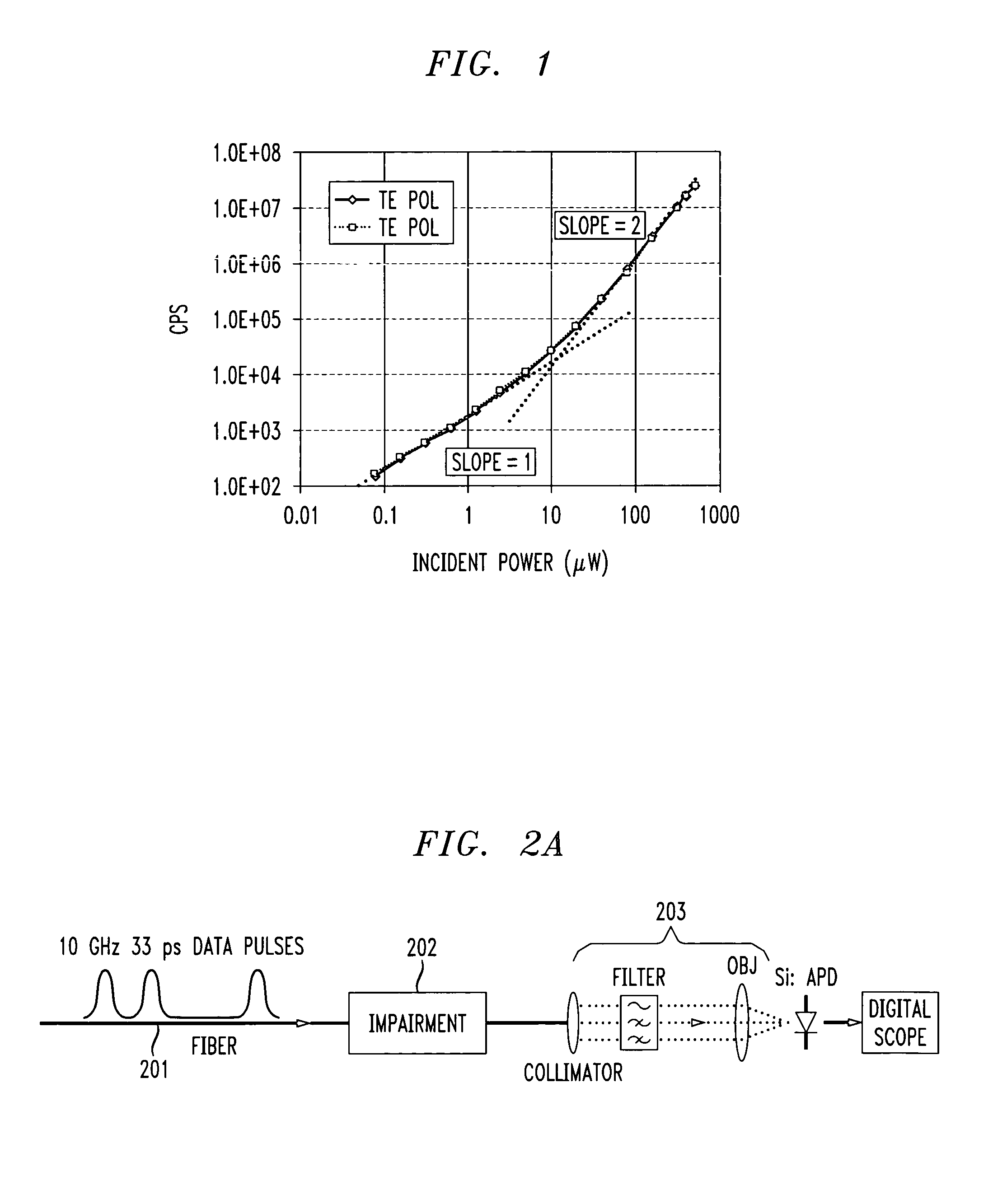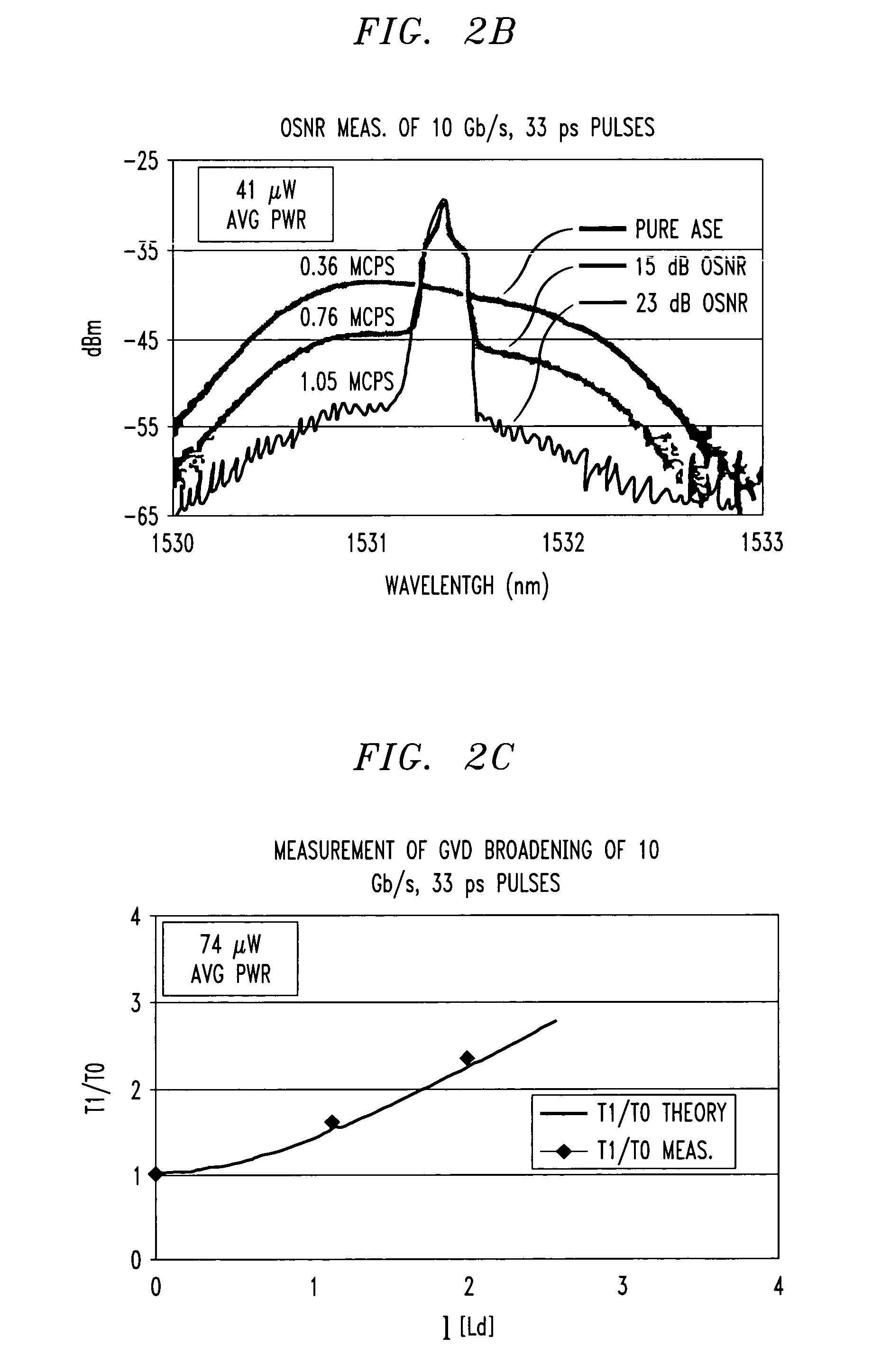Dynamic measurement of and compensation for impairments to optical data communication pulses using photon-counting silicon avalanche photodiode
a technology of optical data communication and avalanche photodiodes, which is applied in the direction of transmission monitoring, transmission monitoring/testing/fault-measurement systems, electrical equipment, etc., can solve problems such as severe degradation of these systems
- Summary
- Abstract
- Description
- Claims
- Application Information
AI Technical Summary
Problems solved by technology
Method used
Image
Examples
Embodiment Construction
[0028]The present invention describes the work done by the inventors in measuring two-photon absorption (TPA) at record-low power in the 1.5 μm region using a photon-counting silicon avalanche photodiode (APD). This technique is described in the above-identified provisional application and in our subsequently published article [1]. (Note numbers in brackets refer to references listed in the Appendix) The low signal power requirement for achieving TPA with a photon-counting silicon APD, as shown in FIG. 1, is due to the high avalanche gain (˜106) of the APD and ultra-low background noise (typically less than few hundred counts per second). FIG. 1 shows single photon absorption (slope=1) and two-photon absorption (TPA, slope=2) responses of an APD (in counts per second-CPS) at different incident power levels of a 1.58 μm continuous wave, CW, laser. Note, at laser power levels below about 10 μW, the slope in the log—log plot slope becomes about 1.0 (slope=1) indicating that one-photon ...
PUM
 Login to View More
Login to View More Abstract
Description
Claims
Application Information
 Login to View More
Login to View More - R&D
- Intellectual Property
- Life Sciences
- Materials
- Tech Scout
- Unparalleled Data Quality
- Higher Quality Content
- 60% Fewer Hallucinations
Browse by: Latest US Patents, China's latest patents, Technical Efficacy Thesaurus, Application Domain, Technology Topic, Popular Technical Reports.
© 2025 PatSnap. All rights reserved.Legal|Privacy policy|Modern Slavery Act Transparency Statement|Sitemap|About US| Contact US: help@patsnap.com



